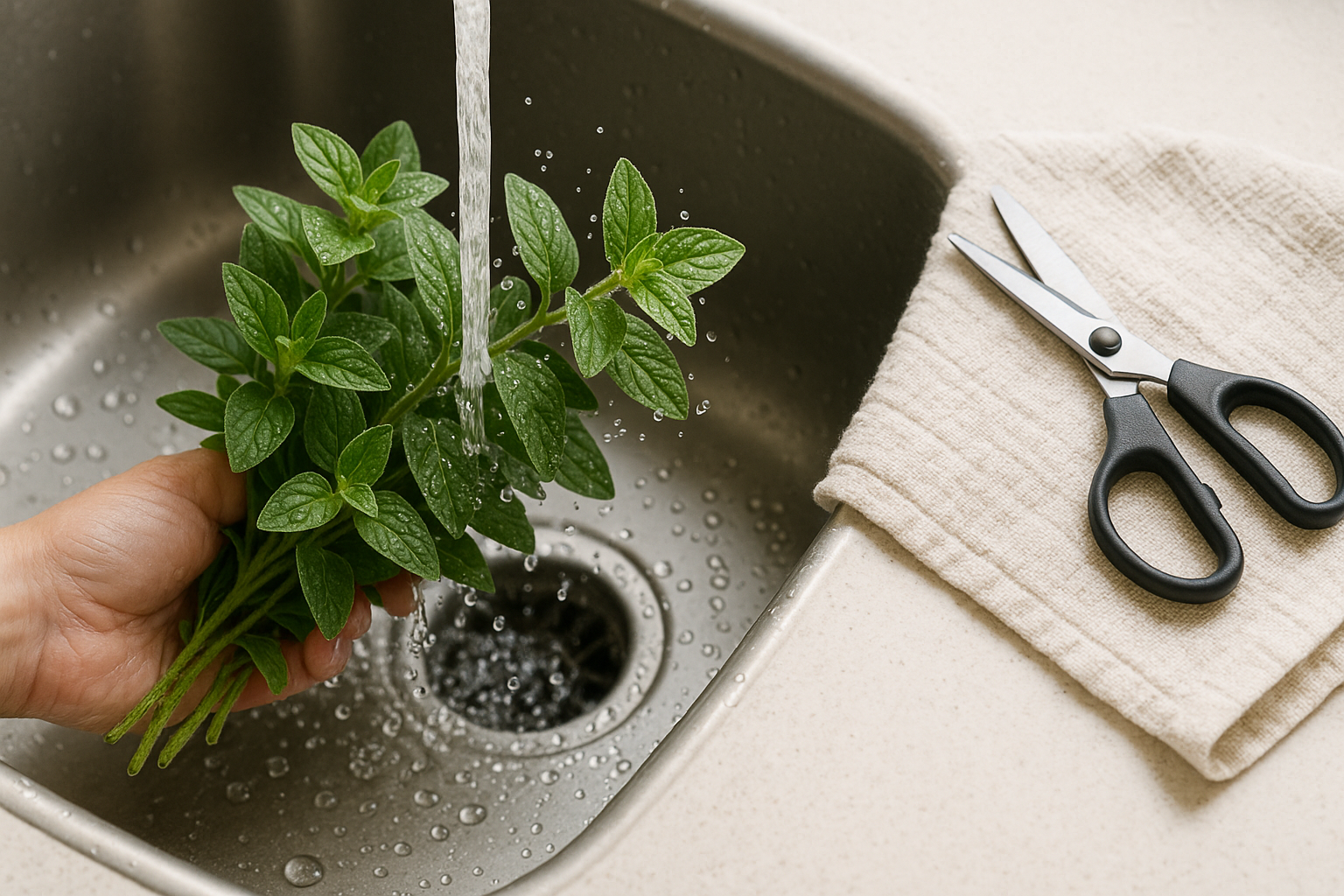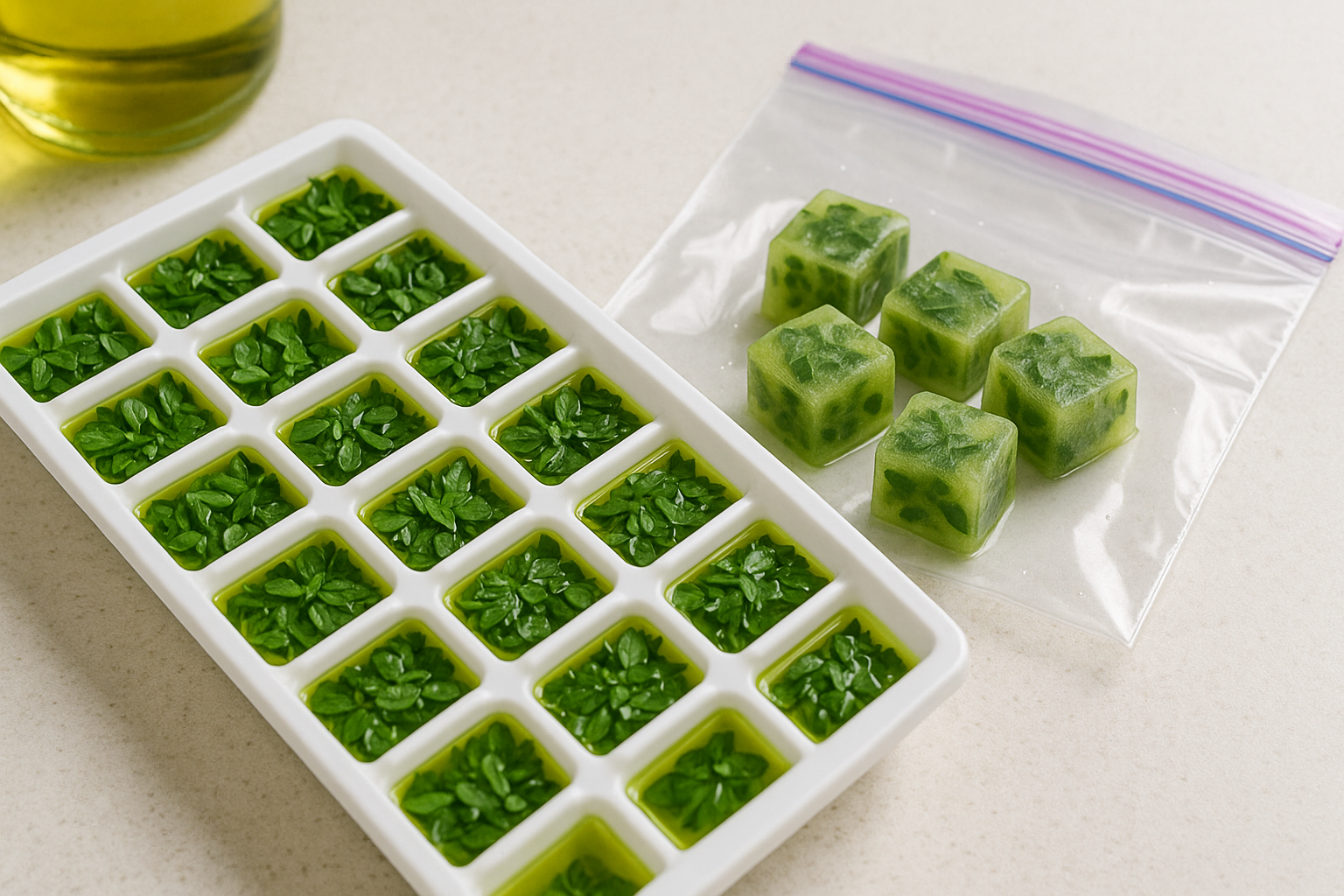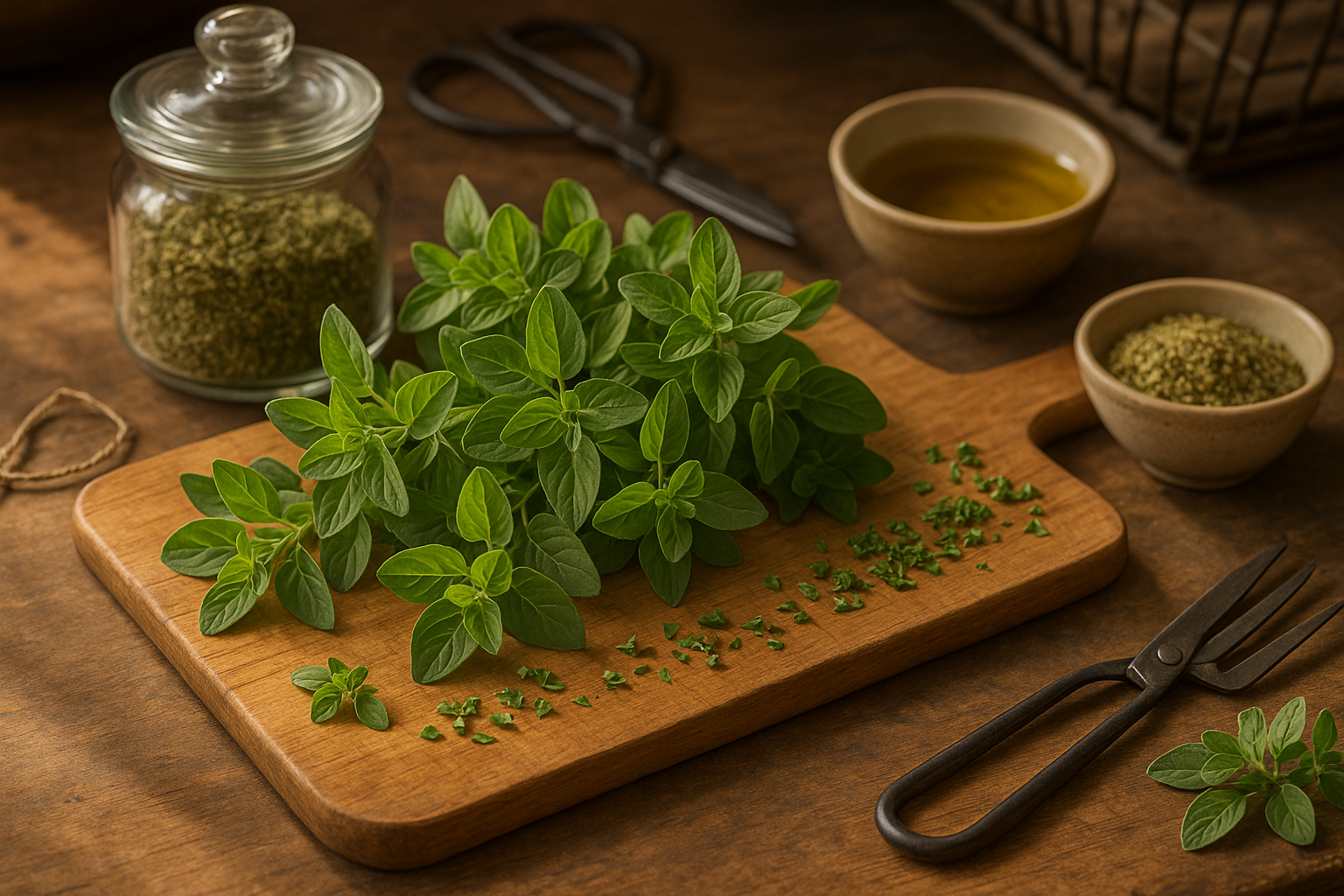Choosing and Prepping Oregano for Storage

Selecting high-quality oregano is the first step to ensuring your dishes burst with flavor and your stored herbs stay fresh longer. Whether you’re harvesting oregano from your garden or buying it at the market, prioritize bunches with vibrant green leaves and sturdy, fragrant stems—avoid any that look wilted, yellowing, or have brown spots.
For dried oregano, inspect the leaves for a deep green color and give them a sniff; they should have a strong, pleasant aroma. Avoid shakers with faded, dusty flakes, as this indicates they’ve lost much of their essential oil content and flavor.
If harvesting at home, use clean, sharp scissors to snip stems just above a leaf node in the morning—after the dew has dried but before the sun gets harsh—to maximize their essential oils. When buying fresh at the market, try to choose organic bunches when possible, and always check for visible pests or dirt.
Before storing, gently rinse the oregano under cool running water to remove soil and debris, then shake off excess moisture. Lay the sprigs out on a clean kitchen towel and pat them completely dry to minimize mold growth during storage.
For immediate use, you can keep fresh oregano in a glass of water like a bouquet on your countertop, or loosely wrap it in a damp paper towel and place it in a bag in the fridge for up to a week.
For longer-term storage, consider drying or freezing the leaves. Simple air-drying on a rack or flash-freezing on a tray preserves flavor while giving you a supply ready for months of tasty meals.
Best Ways to Store Fresh Oregano
Keeping fresh oregano vibrant and flavorful starts with proper refrigerator storage. One of the simplest techniques is wrapping oregano sprigs loosely in a slightly damp paper towel and sealing them inside a resealable plastic bag. Store the bag in your fridge’s crisper drawer—this slows wilting and keeps oregano fresh for about one to two weeks.
Alternatively, try the jar method: trim the stem ends, place the bunch upright in a glass jar with an inch or two of water (like cut flowers), and loosely cover the top with a plastic bag. This method can keep your oregano perky for up to two weeks, but remember to change the water every couple of days to prevent mold.
While the jar-in-water method looks lovely on a kitchen counter, the downside is that oregano left at room temperature wilts fast and risks bacterial growth, so always keep it chilled. If you notice your oregano turning limp, dark, or slimy, or if you see fuzzy mold, those are clear signs it’s no longer good.
Fresh oregano’s shelf life depends on how well it’s stored, but with these easy techniques, you’ll usually get at least a week—sometimes more—of beautiful, aromatic leaves ready for your recipes. For extra longevity, try not to wash your oregano until just before you use it, as excess moisture encourages decay.
Regardless of the method, inspect your stash regularly and discard any stems showing signs of spoilage. Using these practical strategies, you’ll maximize the life of your oregano and cut down on waste—a win-win for your kitchen and your wallet.
Freezing Oregano to Prolong Freshness

Freezing oregano is an easy, practical way to enjoy its flavor long after harvest. Start by washing fresh oregano sprigs gently under cool water, then pat them thoroughly dry—excess moisture can cause freezer burn and damage the leaves.
For freezing whole sprigs, simply spread them loosely on a baking sheet and freeze until firm, then transfer to an airtight freezer bag, squeezing out as much air as possible. If you prefer chopped oregano for quick recipes, strip the leaves, chop them, and portion them into small freezer bags or airtight containers.
Another handy method is the ice cube approach: finely chop oregano leaves, spoon them into an ice cube tray, and add just enough olive oil or water to cover. Freeze until solid, then pop the cubes out and store them in a ziplock bag—these are perfect for tossing straight into soups or sauces, saving you time and mess.
To retain the best taste and aroma, always use high-quality, just-picked oregano and avoid over-handling the leaves, which can bruise and release flavor prematurely. Frozen oregano keeps its potency for up to 6–12 months, but try to use it within six months for optimal flavor.
When you’re ready to use it, add frozen oregano directly to your dishes—no need to thaw! For garnishes or recipes needing fresh texture, however, let oregano thaw briefly at room temperature, blot away any excess moisture, and use immediately to capture its signature freshness.
How to Dry Oregano Correctly
Drying oregano at home is an easy way to preserve its fresh, robust flavor for months—if you do it right! There are three common methods: air drying, oven drying, and using a dehydrator.
Air Drying
Start by harvesting fresh oregano stems, gently rinsing them, and letting them dry completely on a towel. Next, tie small bunches with string and hang them upside down in a warm, dry, well-ventilated space out of direct sunlight. In about 1-2 weeks, the leaves should feel crisp and crumble easily between your fingers.
Oven Drying
For quicker results, oven drying is a reliable option. Spread washed and dried oregano sprigs on a baking sheet and set your oven to its lowest setting, around 170°F (77°C). Leave the oven door slightly open to allow moisture to escape, and check the oregano every 10-15 minutes. It should take 30-45 minutes; you’ll know it’s done when the leaves break easily rather than bend.
Using a Dehydrator
If you have a dehydrator, simply arrange oregano sprigs on trays and dry at 95°F-115°F (35°C-46°C) for 1-4 hours, checking occasionally until the leaves are brittle.
Finishing and Storage Tips
No matter which method you choose, always ensure the oregano is thoroughly dry—any remaining moisture can lead to mold and a dull, flat taste. Once completely cooled, strip the leaves from the stems and gently crush them if desired. Store the dried oregano in airtight glass jars or containers.
To keep the flavor vibrant, place the containers in a cool, dark cupboard away from heat and light. Properly dried and stored oregano will keep its punch for up to a year, ready to liven up your sauces, dressings, and roasts whenever you need a burst of herbal freshness.
Storing Dried Oregano for Long-Term Use
Storing dried oregano for long-term use is easy when you focus on the right containers and environment. Always opt for airtight glass jars or metal tins—these block out moisture and aren’t porous like plastic, which helps keep your oregano fresher for longer.
It’s best to place your containers in a dark, cool cupboard away from the stove, dishwasher, or windows. Exposure to light, heat, and humidity can quickly rob your herbs of their flavor.
To maintain potency, check your oregano’s color and aroma every few months. A vibrant green color and a strong, earthy scent signal freshness, while a faded appearance or weak smell means it’s time to replace.
Generally, properly stored dried oregano lasts up to two or three years.
Organizing Your Oregano
For easy organization, label your jars clearly with the herb name and purchase or drying date using chalkboard stickers, washi tape, or simple masking tape and marker. Consider sorting your herbs alphabetically, by cuisine, or in decorative baskets to add a touch of style to your kitchen while making it easier to find what you need when cooking.
This not only keeps your dried oregano at its best but also keeps your spice cupboard tidy and efficient.
Quick Tips and Common Mistakes to Avoid
When storing fresh oregano, always trim the stems and place the sprigs upright in a jar with a little water, loosely covering them with a plastic bag. This keeps the leaves crisp while avoiding condensation. Change the water every couple of days, and never leave fresh oregano in direct sunlight or near heat sources, as these can wilt the leaves quickly and diminish their flavor.
For dried oregano, store it in an airtight glass container in a cool, dark cupboard. Avoid using plastic bags for both fresh and dried oregano, as they retain too much moisture, which can cause molding or loss of aroma.
One common mistake is washing fresh oregano and then sealing it up while still damp—always pat it dry with a paper towel before storage. Don’t forget to label jars with the purchase date, since dried oregano loses potency after about six months.
When in doubt, rub a little dried herb between your fingers; if the aroma is weak, it’s time to replace it. A simple tip: store dried oregano far from the stove, as fluctuating temperatures and humidity can spoil it quickly. With just a few mindful habits, you’ll preserve oregano’s vibrant taste and enjoy richer dishes year-round.
